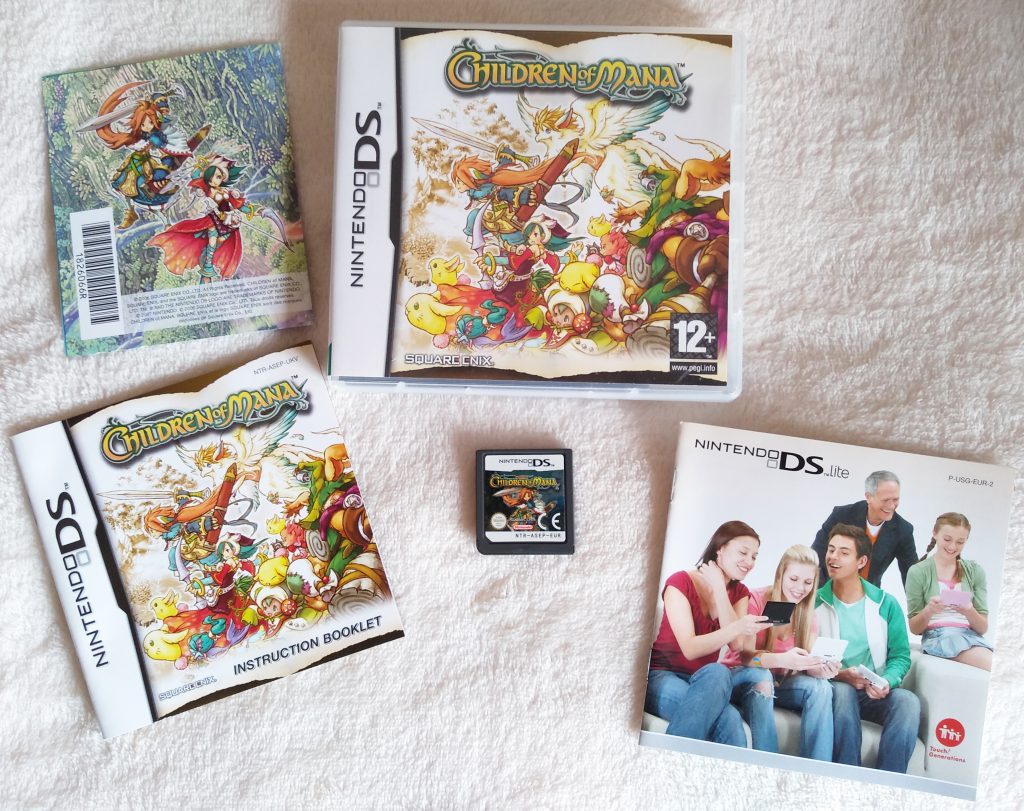
Platform: Nintendo DS
Release Date:
JPN: March 2, 2006
NA: October 30, 2006
AU: December 7, 2006
EU: January 12, 2007
Publisher: Square Enix / Nintendo
Developer: Square Enix / Nex Entertainment
Genre: RPG
Saves: 3 save slots
I always enjoyed the Mana series and games from Square Enix in general, so when I saw this game I had to get it and play it.
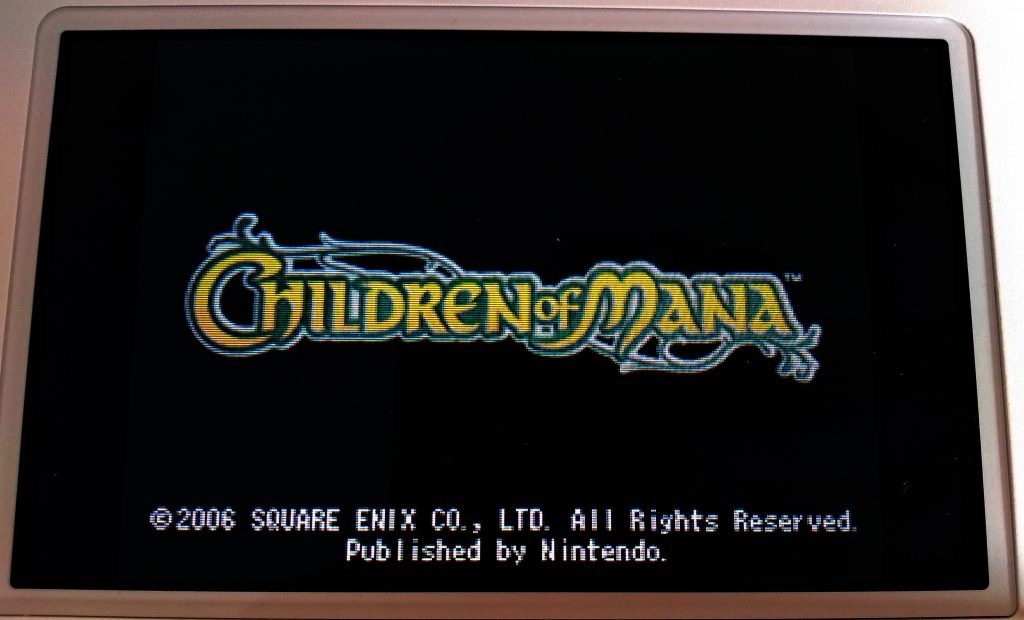
Gameplay
Children of Mana is an action-oriented dungeon crawler. The Player can choose out of 4 young Heroes and combat an invasion of monsters as they learn about the cataclysmic event that killed their families.
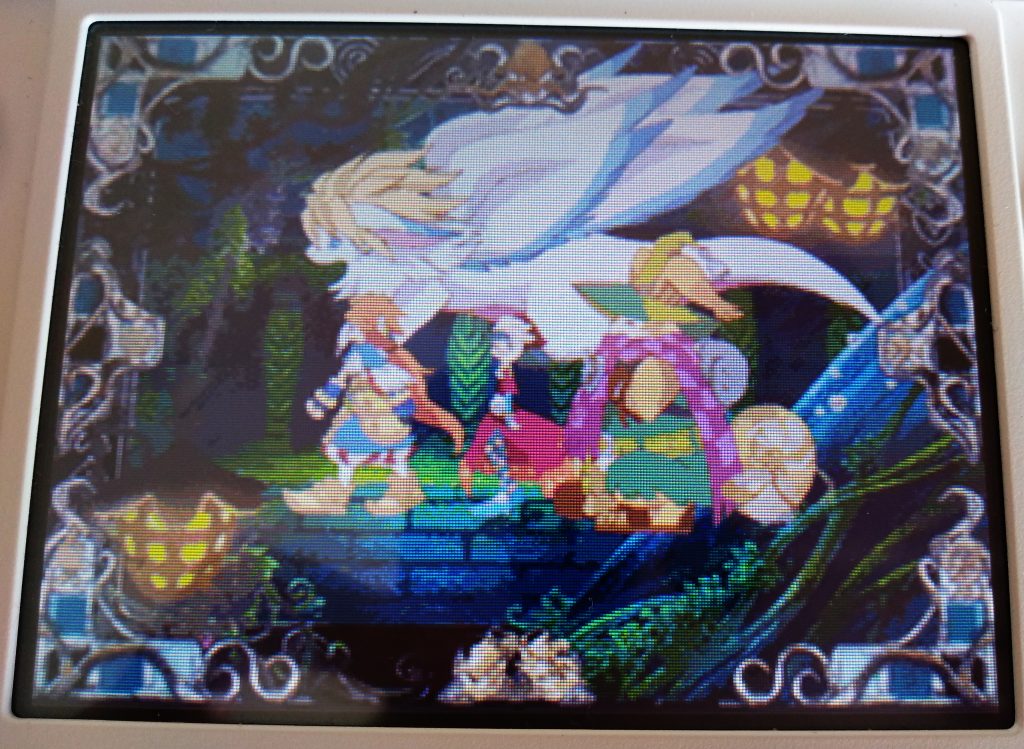
The game plays out nearly identical regardless of which character is chosen, apart from a few character specific quests. There are no companions in the game, like in previous Mana games, but there is an option to play co-operative Multiplayer up to 4 players, over local WiFi, with progress saved to the host.
The Player starts in Mana Village and proceeds to dungeons which are randomly generated levels. There they defeat monsters and locate an item called a Gleamdrop, which they must bring to a Gleamwell, to open up the next level in the dungeon.
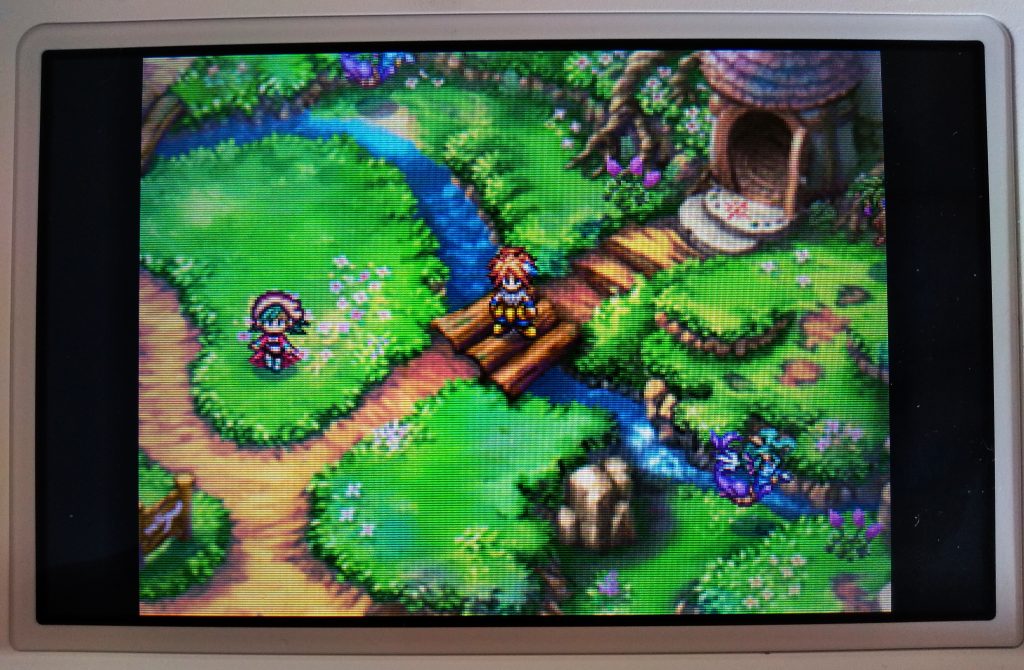
The fights are real-time battles. The player has access to four different weapons; a sword, a flail, a bow and arrow and a hammer. They can have two of these ready at any time by “equipping” them / mounting them to attack buttons. These can be swapped out any time. Each weapon has a normal attack and a Fury attack, which can be triggered once the Fury Gauge is full. Some weapons can also be used in the environment; for example, the hammer can hit switches, and the flail can pull you across gaps.
The Player can also have one out of eight Elementals with them, which gives them magical attacks and enhancements, which can be swapped out in Mana Village.
Lastly the Player can equip gems, which give various attributes. These are placed in a frame, and the Player can “build” their character how they see fit, as long as the gems fit in the frame.
Apart from the Main Story Quests, the Player can pursue “extra” Dudbear Quests from the Dudbear in Mana Village for extra rewards.
Development
Square Enix began a drive to develop “polymorphic content” in 2003, a marketing and sales strategy to “provide well-known properties on several platforms, allowing exposure of the products to as wide an audience as possible”. In early 2005, they announced the “World of Mana Project”, where they would apply this idea to the Mana franchise. These games would not be sequels nor prequels, but share thematic connections. The first release of this project, and the sixth in the Mana series, was this game, Children of Mana, on the Nintendo DS.
It was developed by Nex Entertainment, who had created dungeon crawlers previously in collaboration with Square Enix. It was designed by series creator Koichi Ishii. The anime cutscenes were made by Production I.G.
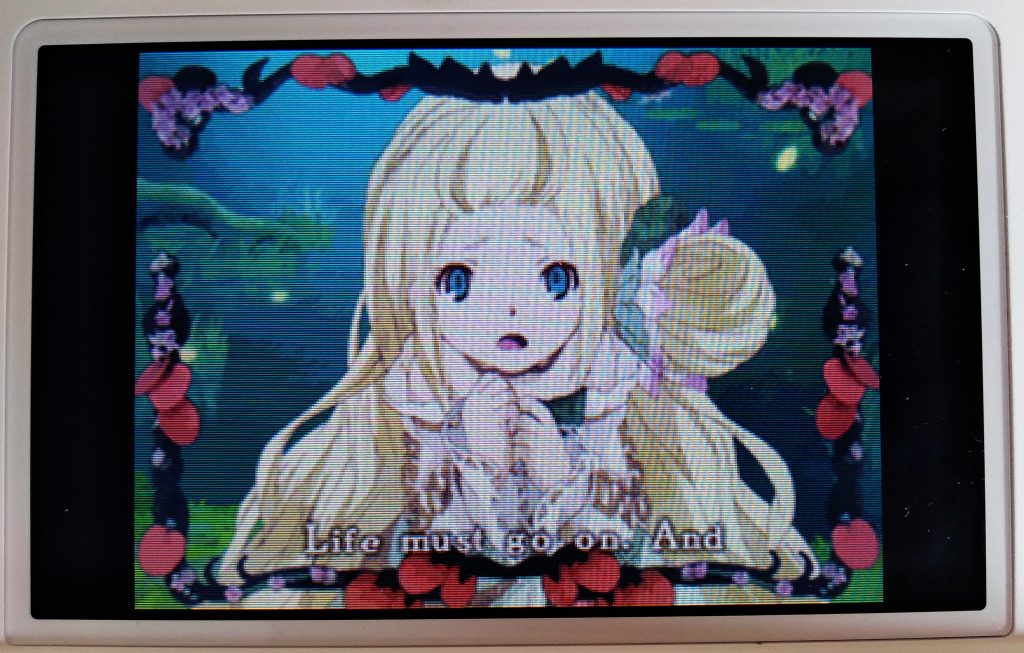
The game was planned from the start as a “fun-for-all action type game” and was going to take advantage of the DS’s capabilities. Ishii was especially focused on creating a truly cooperative multiplayer game, which he had wanted to create since Secret of Mana, the second game in the series. He wanted players to interact with people in their near vicinity, like the local multiplayer from Secret of Mana, and therefor chose not to utilise the DS’s Nintendo Wi-Fi, but only use local WiFi.
He also designed the multiplayer to create a sense of “chaotic excitement”. He wanted players to interact without focusing on the difficulty or competing against each other. Several of the game’s design choices were meant to focus more on the action components, such as attacks sending enemies flying across the screen and the use of both the buttons and stylus to keep the controls simple and directly connected to the action. The randomly generated dungeon crawling mechanic was also a means toward this end.
Packaging
I only own the European version of Children of Mana. I bought it at CEX in the UK for £8.
The back of the box mentions the four weapons, the use of gems to customise your character and the co-operative multiplayer, which lines up with the intentions of the game design.
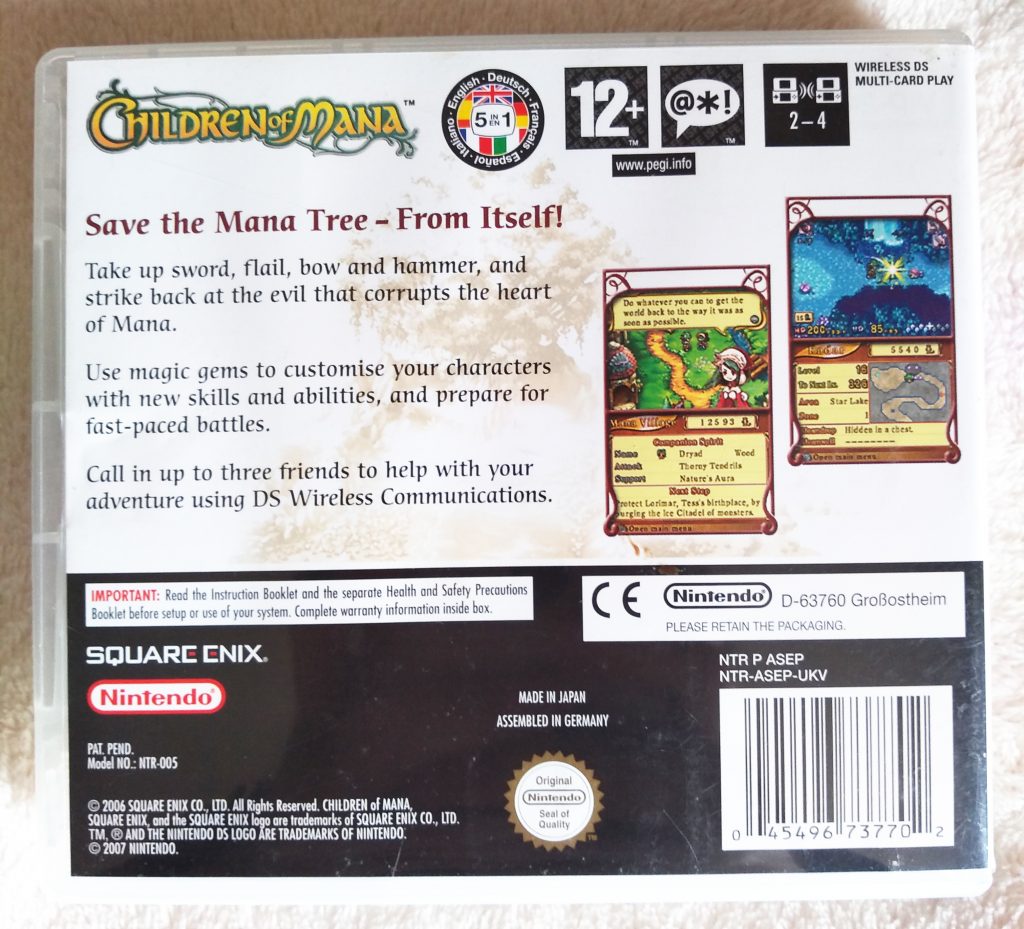
Although the game is European, the packaging is specifically for the United Kingdom. The box’s spine as well as the manual’s corner is green, with the code NTR-ASEP-UKV. The game cartridge has NTR-ASEP-EUR. So this is the box and manual distributed in the UK (UKV), and the game itself is distributed in Europe (EUR).
The manual itself has gorgeous art in it, and apart from the usual how to play sections also gives the intro of the main story, information of characters, gimmicks found in dungeons etc. It is quite thick.
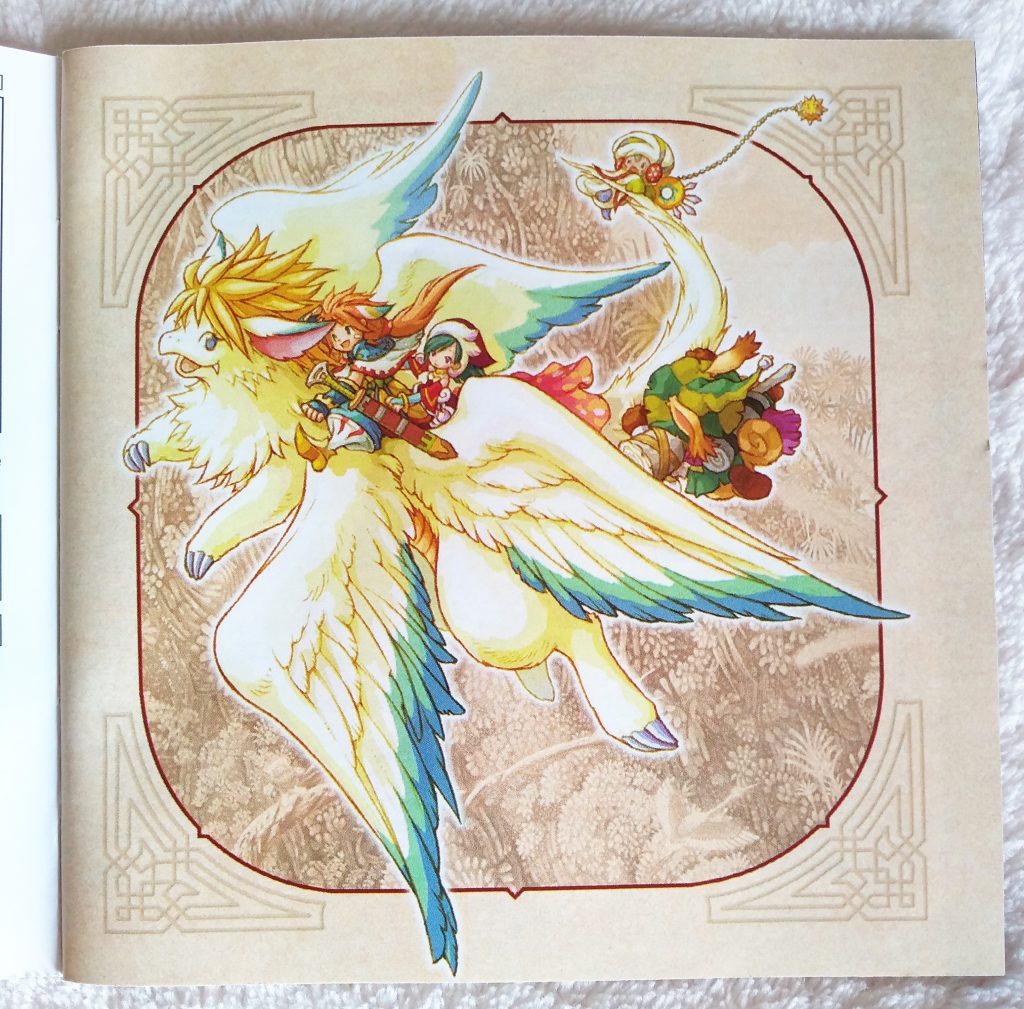
Furthermore the game came with a standard DS health and safety booklet, and a small booklet advertising the latest Nintendo DS lite and games and a leaflet to join the Nintendo VIP. The leaflet has art of Children of Mana on it.
Accessibility
- Visual
The game makes use of gems which are only differentiated by colour. This may be hard to differentiate for the colour blind, although each gem has its own name and description.
The text is a decent size, can take up to two lines and covers about a fourth of the screen. It is in an easy to read font in dark brown, on a very light yellow background. Text moves on upon a button press, so can be read at leisure.
During the animated cutscenes are subtitles, which are white with a brown stroke.
The game comes in five languages on the EUR version; English, German, French, Spanish and Italian.
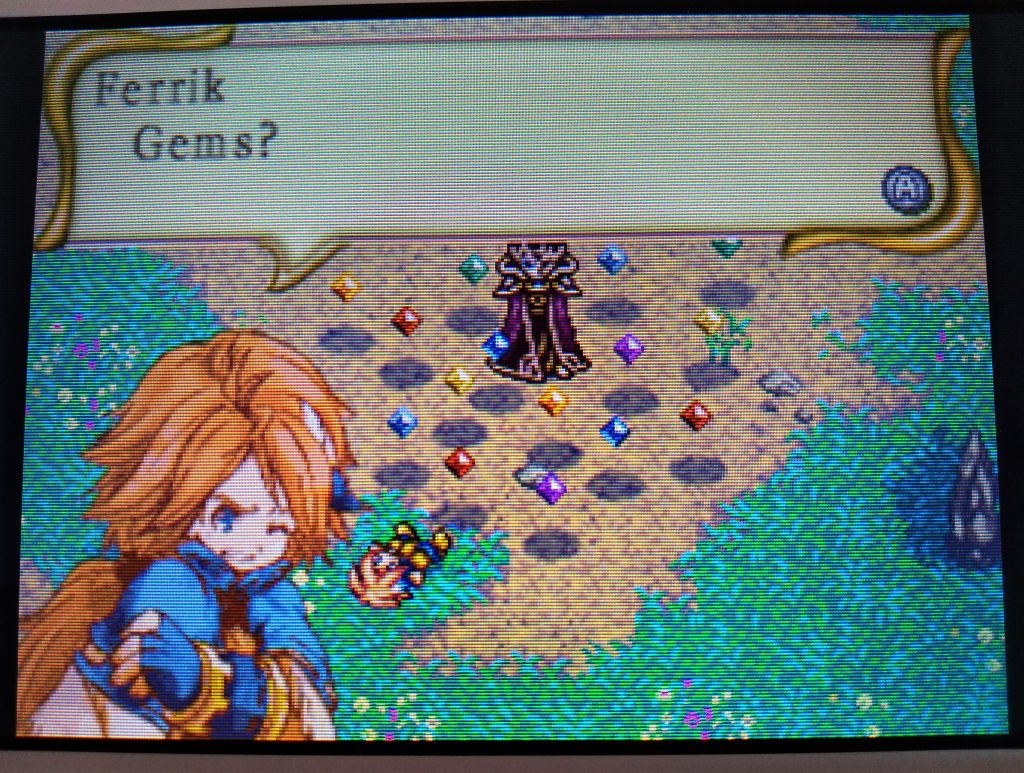
- Fine-Motor
The game has realtime battles and requires fast paced input. You often end up swapping weapons (although game is paused during this) and moving around enemies to hit them when convenient.
Control wise, the game does not allow for re-mapping of buttons. - Auditory
The game is text-heavy and does not have any voice acting. You can not hear where enemies are or when walking against a wall. - Cognitive
Attacks can send enemies flying across the screen, which can be hard to follow and annoying.
Power Up
I really loved the Secret of Mana on the SNES, and want to add more of the Mana series to my collection. So when I spotted Children of Mana in the secondhand shop CEX, I instantly bought it.
I never played much on the DS when it came out and missed out on many games, so hadn’t really heard anything about this. When I started playing this I quickly realised it wasn’t like Secret of Mana at all.
With only one village and a handful of characters, the thing I enjoy most about RPGs, exploring the world and meeting characters, was not present. I quickly realised it was a dungeon crawler, not my favourite type of games, and a randomly generated one on top of that. I personally like the specifically hand crafted dungeons game designers come up with, so having these random dungeons wasn’t doing it for me. On top of that, they quickly became repetitive and I started to find patterns where things would be.
As the game is mostly focused on combat, I figured this is where its strength lies, but to be honest, I found it very repetitive and simplistic. I mostly got by using the sword, and the flail as a backup in case I got surrounded to smash them all away from me. I only used one elemental that could heal me, which I also rarely used as items are found plenty, and money to buy them with even more so. I never bought any weapons or armour, as I found them plenty as well and could always upgrade. The gems made me very overpowered as I had created a build that did much extra damage, had a wave attack in every third hit, gave me some environment perks like not slipping on ice or getting hurt from spikes etc.

Children of Mana had a focus on user-friendliness, which is fine in and off itself, but I think it made the game too easy. The bottom screen always shows a map of the area, and also gives a hint where to find the Gleamdrop and Gleamwell, nullifying dungeon exploring. The combat is mostly the use of one button to whack monsters.
The “chaotic excitement” of enemies flying over the screen as they got hit didn’t do much excite me but rather annoy me. Monsters bounce around and hit me, which set me flying around as well, and it becomes more like watching a game of pinball. I haven’t tried out the multiplayer, but I imagine it’s even worse then.
This all sounds rather negative, and I did consider quitting midway. But I stuck with it in the end as I do love the Mana series, and Children of Mana is, like all the others in the series, gorgeous to look at. The sprites are diverse and beautiful, the backgrounds even more so. The animated cutscenes are pretty, and I believe the DS screens do not do them justice at all. The music is nice too. The story is not the best, it’s pretty straight forward and there is little in terms of choice or thought process going on from the player’s end. A fairly standard good-will-prevail-evil kinda story.
I played the game in 20 minute bits during my lunch time at work. I managed to get through a dungeon room in about 5 minutes, so I hit a save point every 20 minutes nicely. Overal I finished the game in 15.5 hours, doing every side quest and several Dudbear Quests too. So overal, about 2.5 months only playing during my work lunch breaks.
I was glad I had finished it, and I don’t think I’ll pick this one up to replay any time soon, despite the other Heroes to play as.
Recommendation
Despite being a Mana game, it is a randomly generated dungeon crawler. The game is beautiful to look at, but the gameplay is repetitive.
If you’re expecting an RPG like Secret of Mana, you will be disappointed. The game is fairly easy, with not much of a world to explore or characters to meet. It looks gorgeous though.
If you like dungeon crawlers, or heavy action oriented games, or are a Mana fan, the game is enjoyable enough. If you hate repetition or want an old fashioned RPG, you might want to give this one a miss.
Did you play this game? What are your memories of it? Are you thinking of playing this? Is there any information you’re missing? Let me know in the comments below!